The Big 2020 KonMari House-Reset Event!
Posted by admin on
The post The Big 2020 KonMari House-Reset Event! appeared first on Daniel Kanter. Please click through to visit my blog and explore other great posts! If you are seeing this post anywhere else, it is without my permission.
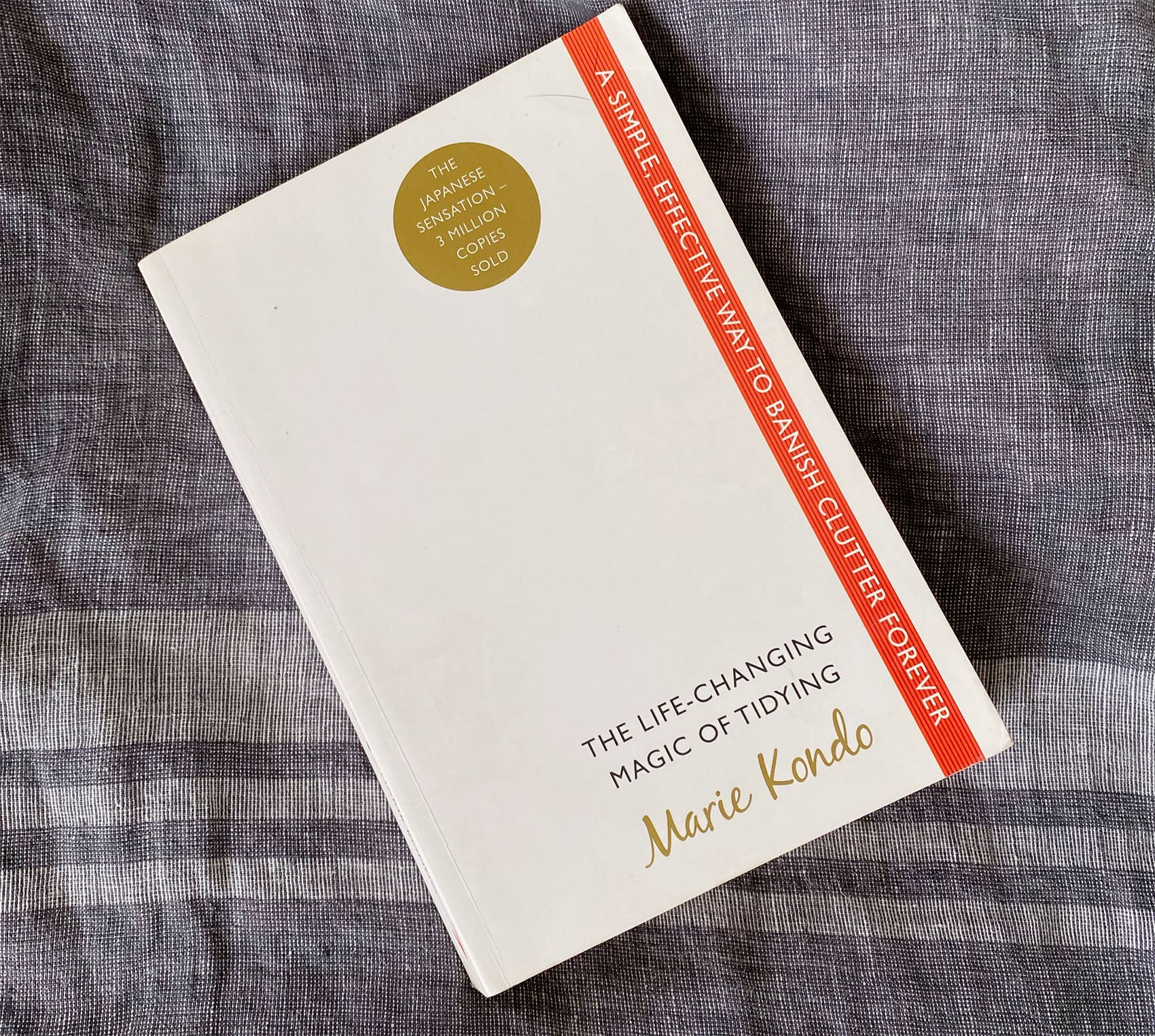
Considering it’s been roughly six years since The Life-Changing Magic of Tidying Up was released, and nearly two years since Tidying Up with Marie Kondo hit Netflix screens around the world, I’m guessing you’ve been exposed to Marie Kondo in some context already. I remember becoming privy to her around the time the book came out, when it felt like her signature KonMari method took the internet by storm and it’s what all the bloggers were talking about for like 6 months. I vaguely remember approaching this period with the same contrarian attitude with which I regard most new things. Thanks; I hate it.
And now, true to form, I’m very late to the party but will bravely pretend I’m right on time and everyone else was just early. That’s the kind of on-trend taste-making work you can expect from this blog. Here we go.
One of the laziest but most accurate ways I can describe the last 7+ years of owning this house is busy. I feel like I’ve just been bouncing from project to project with very little time in between for a long time, and control over my own home has gotten away from me a bit. I love things, but the volume and lack of organization had started to feel like a burden. A chaotic living space is always draining, but worse with a house under renovation because filling it with too much crap becomes an actual obstacle to getting things done. A little while ago, it hit me that while this house is pretty long on space, it’s actually really short on functioning storage—kitchen cabinetry remains lacking, the only closet on the first floor is completely gutted, the linen closet on the second floor is far from optimized organizationally, and my furniture generally offers very little in terms of space to stow things away. Some efforts have been made in the basement and the garage, but are far from ideal. So maybe my real problem is storage, not excess?
The trouble is, I couldn’t even really tell because I didn’t have a great handle on what I owned, which makes planning any storage-related projects feel difficult. Do I really need tons of cabinetry in the laundry room, like I think I do? How should I fit out the interior of the dining room closet if I don’t know whether it needs to hold a vacuum cleaner or shelves of serving ware? So it struck me that to proceed in any kind of orderly, informed fashion, I needed to first really take stock of what I had and open my mind to the possibility that, in fact, there are just simply too many items in this home. Then I could worry about how to store it. So after wrapping up the Bluestone Cottage kitchen renovation, I decided to put a brief moratorium on new projects until I got my own house under control. So I’ve been busy, but in a different way than normal!
ENTER, STAGE LEFT: MARIE KONDO.
Let’s talk about Marie Kondo for a minute because there are some things I feel inclined to say. First thing’s first: if you haven’t actually read The Life-Changing Magic of Tidying Up, you might think you know what it’s about but it’s highly unlikely you actually do. Because here’s what I think has happened: Kondo releases this book at the ripe age of 27. She is a woman. She is extremely tiny. She is Japanese. She has some cultural customs that factor into her KonMari method that feel foreign and odd—laughable, even. The book then gains traction particularly among American bloggers who make it all about throwing away all their stuff, possibly including their high school yearbooks. This sounds crazy! Extreme! So we either dig further or tune out. And then Netflix releases a show wherein she brings her method into a series of American households, and we watch as they, too, throw away all their stuff, vanquish the clutter, and reclaim their wall-to-wall carpeting from under the mounds of junk.
The lesson here is essentially that packrats need to get rid of things in order to have fewer things, and doing so will make them feel better. It’s easy to swallow but hardly groundbreaking. We like the show because it provides a semi-satisfying before-and-after, and some of the people they cast to be on it are charming or relatable in some way. Through this lens, Marie Kondo becomes a kind of poster child for minimalism, which is puzzling because that’s not what her seminal work is about.
As a result of so many people being exposed to her work through this watered-down television version, through this watered-down blog version (definitely not what I’m in the process of doing right now), through good old word-of-mouth, or some combination, my impression is that Marie Kondo has, to many people, become kind of a punchline. Like she’s just that cute little kooky Japanese lady who wants you to throw away all your things and live in a white box. I’ve been sharing bits and pieces of my “tidying journey” over on Instagram stories, and I can’t tell you how many people have sent me messages prefaced with some variation of “Marie Kondo is not for me because I’m not a minimalist” (she never says you have to be) or “I got through one room and gave up; the whole joy thing just doesn’t work for me” (you’re doing it wrong, it’s not a room-by-room approach) or “Kondo has clearly never known clutter herself, so she has no business telling me how to handle my own” (she has, and writes about it at length).
I truly believe that if Marie Kondo were older, taller, whiter, a native English-speaker, and possibly male, this outright dismissal wouldn’t be happening. It seems to me that Real Simple has been publishing the same four ineffective cleaning/organizing/tidying tricks for like twenty years, and yet for some mysterious reason we accept, without question, that getting rid of a shirt every time you buy a new shirt is an effective or sustainable path to a clean house. And yet, when a person who has literally dedicated her entire neurotic life to figuring this out for us so we don’t have to, makes a business out of it, and writes a best-selling book describing it in detail so you can do it too—for free, no less, even though people pay for her services—all we want to focus on are those motherfucking yearbooks which, BY THE WAY, you are 1,000% free to keep according to Marie Kondo. You are 1,000% allowed to keep whatever the hell you want, as much as you want, according to Marie Kondo. The point is that she is literally a self-made expert in this very niche field that is populated by many voices but a scant few experts. Her advice is qualified. We should listen to her. Why in the world wouldn’t we?
I rest.
SO. WITH THAT. Because I hope that it’s legitimately helpful, I’d like to get into what I took from the book, and how I approached my KonMari whirlwind cleaning extravaganza! To me, it rings true that the overall method really applies to anybody (and could even apply to things other than physical clutter), but the actual specifics and ways of thinking about it may differ between people. So this is what helped me! I still highly recommend just reading/listening to the book—I sat in bed and read it cover to cover in a few hours, and I’m neither a regular nor fast reader. The text itself tends to be fairly repetitive, but I’m guessing that’s on purpose to take advantage of liminal thinking or something.
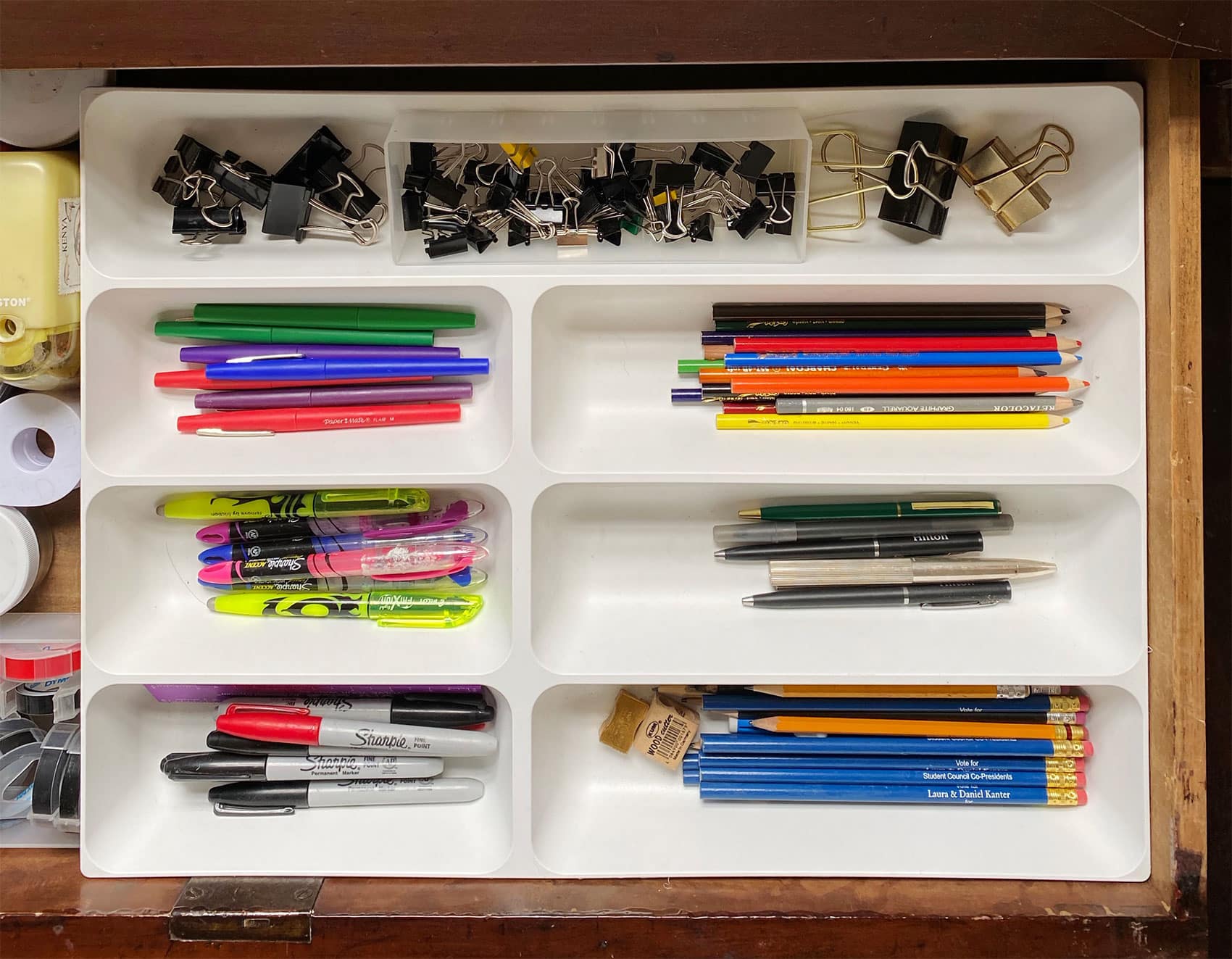
+ THE BASICS +
A few important things to understand, so listen carefully.
1. The Life-Changing Magic of Tidying Up is really like 90% about discarding, not organizing. The idea here is that you need to know what you need to store before you can think about how to store it, and the only way you know what you need to store is to take inventory of what you have. Often people find that the organization part mostly works itself out once the tidying part is completed. You want to move through the discarding as quickly as possible (which I took to mean a week or two, but she mentions 6 months in the book—ha!), so getting caught up in how you want to organize and store things mid-purge is a roadblock to speedy progress.
2. Fundamental to the KonMari method is the idea of tidying by CATEGORY and not by location. We often store the same type of thing in various areas of the house, so a room-by-room approach simply does not make sense. This is counter to the way most of us learned or figured out how to approach a big clean-out (or whatever you want to call it, pick whatever is least triggering!), but that doesn’t mean you know better. You do not. Check yourself before you wreck yourself, and listen to Marie.
3. The categories are specific, and come in a particular order. FOLLOW THE DAMN ORDER. It goes: Clothes, Books, Paperwork, Komono (Japanese for “small things”—i.e. a catch-all category we’ll get back to), and lastly Keepsakes. The idea is to start with what’s easiest to part with and will create the most volume of discarded objects upfront, thereby creating the momentum and sustained motivation that comes with experiencing quick results. It’s called positive reinforcement. You know, the way human brains are hardwired to find the drive to do anything at all.
It’s almost like this lady knows what the hell she’s talking about.
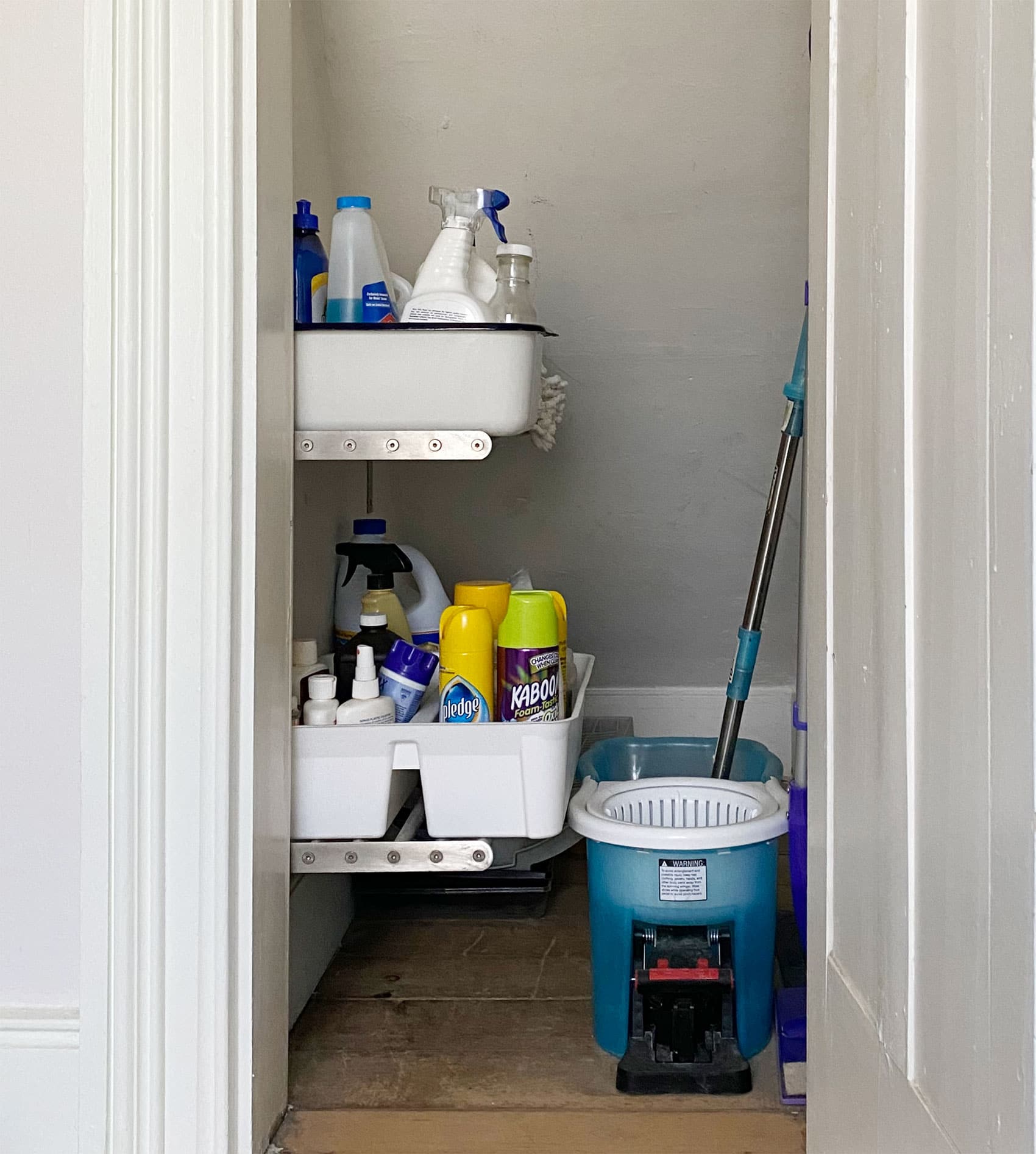
+ THE BIG TAKEAWAYS +
I’m going to guess you’ve heard this idea that every item must be held in your hand, individually, and that it must “spark joy” in order to be kept. You may have also heard some stuff about thanking your belongings as you put them into a trash bag. I see you rolling your eyes over there—hear me out! I think the particular language doesn’t resonate with everyone (how the hell do I know if something “sparks joy”??? I’m dead inside!), but the general concept is good. I found that reframing it slightly and keeping a few things in mind throughout REALLY helped me. The fact is that I really do like almost everything I own (I wouldn’t have procured it if I didn’t!), so nearly all of my decision-making came down to “like” vs. “LOVE,” and that line can feel unclear. I think some people are more capable of this gut-level, joy-based decision-making (or just don’t actually have much attachment to a lot of their stuff), but I like a little rational thinking thrown in there because I, too, am dead inside.
Anyway. I had the following list in the notes app on my phone, and would review it before I began the day’s purge to psych myself up and get myself in the right headspace.
- Before you start, really try to nail down with yourself WHY you want to do this, and visualize what life looks like on the other side. Hang onto that vision! If you’re questioning whether to keep or toss an item, check whether it’s part of that vision or not. Generally if you’re questioning, you already have your answer. It’s not.
- DO NOT GET DERAILED THINKING ABOUT STORAGE. How much space you have or don’t have is not relevant at this stage.
- Try to think of it as choosing what to keep rather than what to get rid of. If it helps, imagine choosing things at a store—just because you have it and like it doesn’t mean you’d necessarily choose to buy it again, especially compared to all these other fabulous items surrounding it. It doesn’t mean you hate it just because you’d leave it on the shelf. Make it more about selecting the things you absolutely love and would slap your best friend over if they saw it first at the thrift store.
- Has the item fulfilled its role in your life? The role could have started and ended the day you bought it and you’re really just holding onto that memory, or some time later. But is it something you want to bring into the future with you, too? Is it something that future-you derives pleasure, happiness, or value from? Because…
- Ultimately, where we live should be for the person we are becoming here and now, not for the person we were in the past. If I were writing this blog post for myself, I’d tell myself to go back and read that three times.
- “Someday” never comes when you’re waiting to put something in order. It just doesn’t. Do it now. Shit or get off the pot.
- Really important things are not that great in number. Really.
- Your surplus does not mean that you are taking good care of things (often, your surplus means that you are not taking good care of things…ask me how I know). Aim to revitalize your relationship with your things by pairing down to what you can actually handle.
Onwards.

+ THE SORTING PROCESS +
DO NOT SKIP THE PART ABOUT GATHERING EVERYTHING IN ONE SPOT. It is absolutely essential. This means that as each category comes up, you will likely have to run around the house and gather all the things that belong to that category. Use the floor, the bed, the dining room table—anywhere big enough to accommodate a big pile. This has two very important and effective purposes. The first is that seeing it ALL TOGETHER really drives home the volume of stuff. You really can’t do that otherwise. The second is that it forces you to actually pick up and consider each item and put it somewhere. You may find that the most minuscule task of taking a shirt and putting it back on a hanger barely feels worth the effort, whereas just leaving it on that hanger—if you haven’t pulled everything out of the closet—requires no action at all. This comes into particular play with books, I think: I found that I could scan a shelf and easily pull out 5 things I could lose, but actually taking everything down and holding each book individually brought that number way up. We’re good at just not seeing the things that have been stagnant in our spaces for a long time.
A few helpful rules:
- If you neglect to gather something before you start sorting that category, it’s a pretty automatic toss. If you didn’t even remember its existence to include it in the category, it’s highly unlikely that it’s important enough to keep.
- Try to start early in the day. Clear head and such. Try, also, to be sober.
- Do not watch TV or listen to fun music or podcasts while you sort. This was hard for me because I find silence crushing and basically unbearable, but this is something that requires focus and some emotional investment to really commune with your shit and consider your life and all that. I basically listened to elevator music throughout this event because silence was too harsh. Lullatone is a great band to accompany a KonMari purge.
- Once it hits the donation/sale/recycling/trash bag, it’s gone.
Let’s get into the categories! I think this is where people get tripped up and stuck during this process, and somehow I am arrogant enough to believe I have something to offer here.
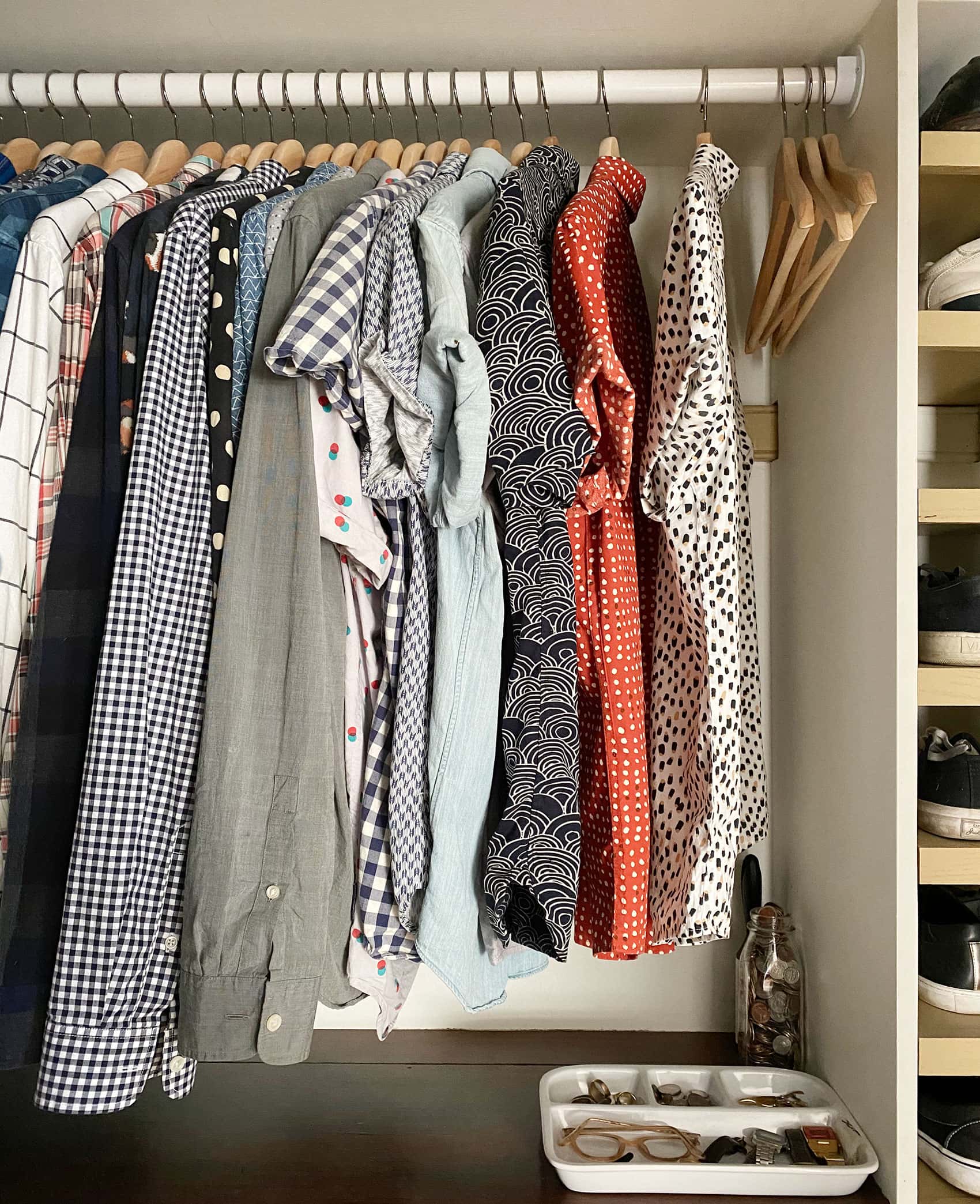
+ CLOTHING +
I’d recommend including shoes, belts, ties, scarves, and other clothing-adjacent things in this section. If it makes sense to you, add in watches, jewelry, glasses, and other such accessories. Some things (like clothes that no longer fit but are around for sentimental reasons) are OK to set aside for the Keepsake category. A helpful KonMarie tip:
- You will never use spare buttons.
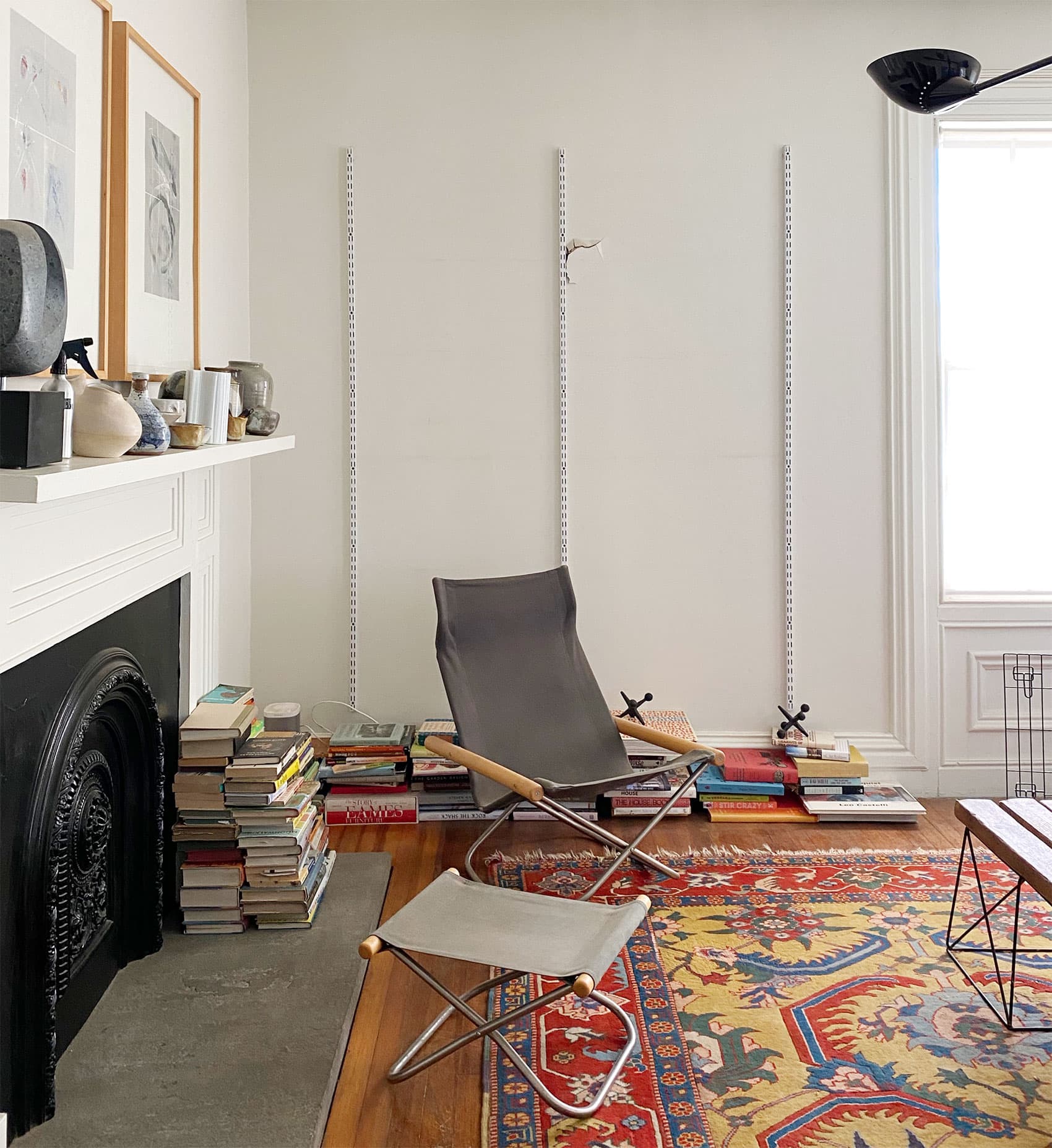
+ BOOKS +
You know what a book is. I know what a book is. BUT I found that some books really felt more like keepsakes: yearbooks, books from childhood, even some books from high school and college. I think that’s OK—just set them aside and deal with them during the keepsakes category. This is actually helpful, I think, because doing so increases the volume of the Keepsake category and helps put those other keepsakes into context—it’s easier to let go of a text you read in college when it’s next to the pile of letters from friends and loved ones you received during the same period. Some helpful KonMari tips:
- Books are just paper with information printed in them, and their presence alone really doesn’t mean anything unless you’re reading them.
- If it’s unread (especially for a long time), you’re not likely to ever read it. Its purpose may have been to teach you that you didn’t need it, or started and ended when you bought it and felt good about supporting the local bookstore or the author or the publishing industry generally, or something other than actually reading the thing you’re not going to read. Let it go.
- Will you really ever “re-study” it? A book might have been completely fascinating but you already read it and got the value of the information, and most of us don’t need to do that more than once with any given text. And, let’s face it, even if you do want to dig up a piece of information, you’re more likely to google it than go searching through a book.
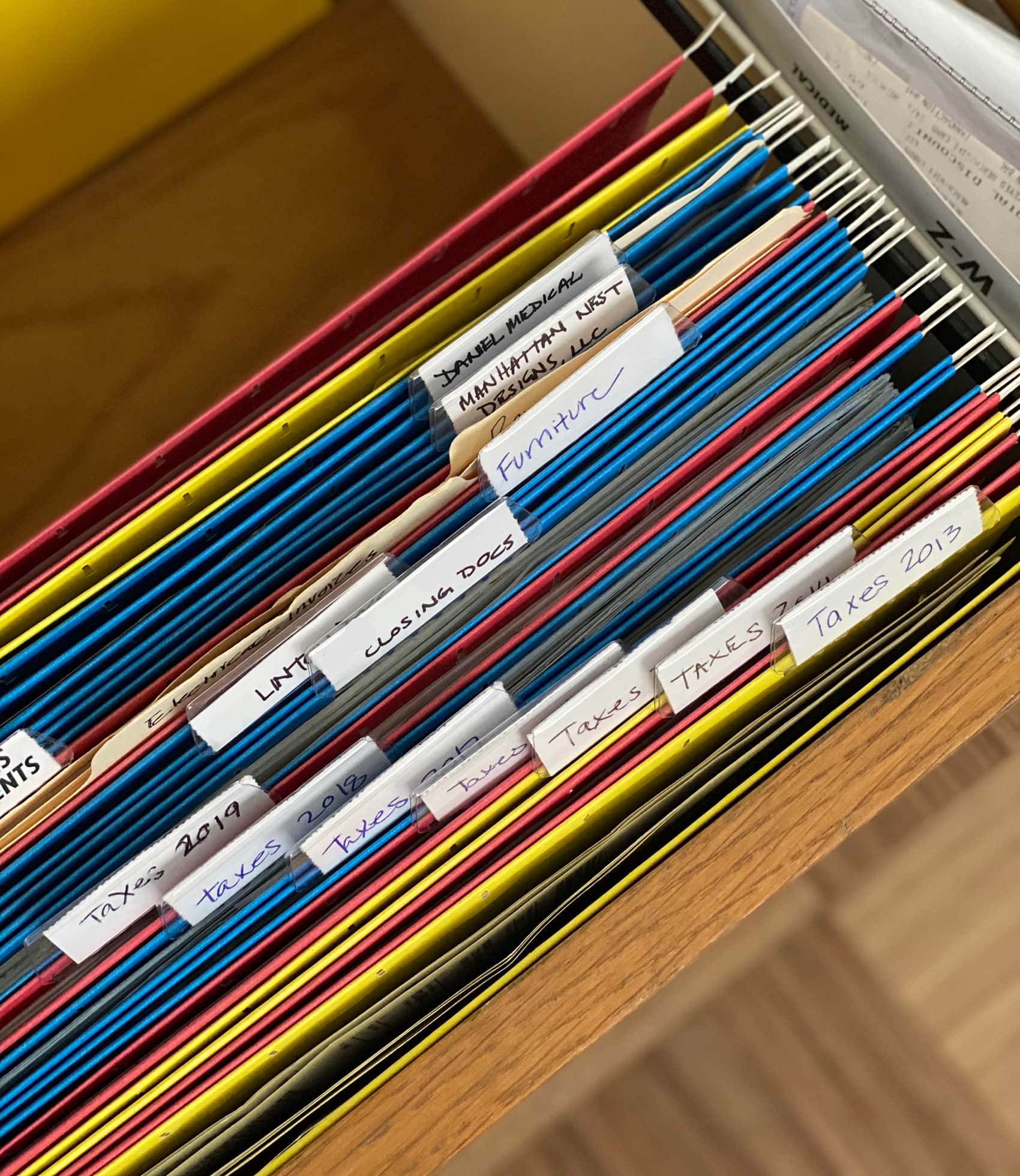
+ PAPERWORK +
Also a category where certain things make more sense to set aside as keepsakes (for me, all my materials from school). Otherwise, you’ll likely want to get rid of whatever you can, because recycling a buttload of paper is super fun and freeing. Keep what you absolutely need but remember that a lot of your paper probably includes things you can find again online should the situation ever arise (bills and bank statements, especially). Manuals are another good example—you can find them all as PDFs online, so just toss. If you must keep, at least reduce the bulk by tearing out the pages written in languages you don’t speak.
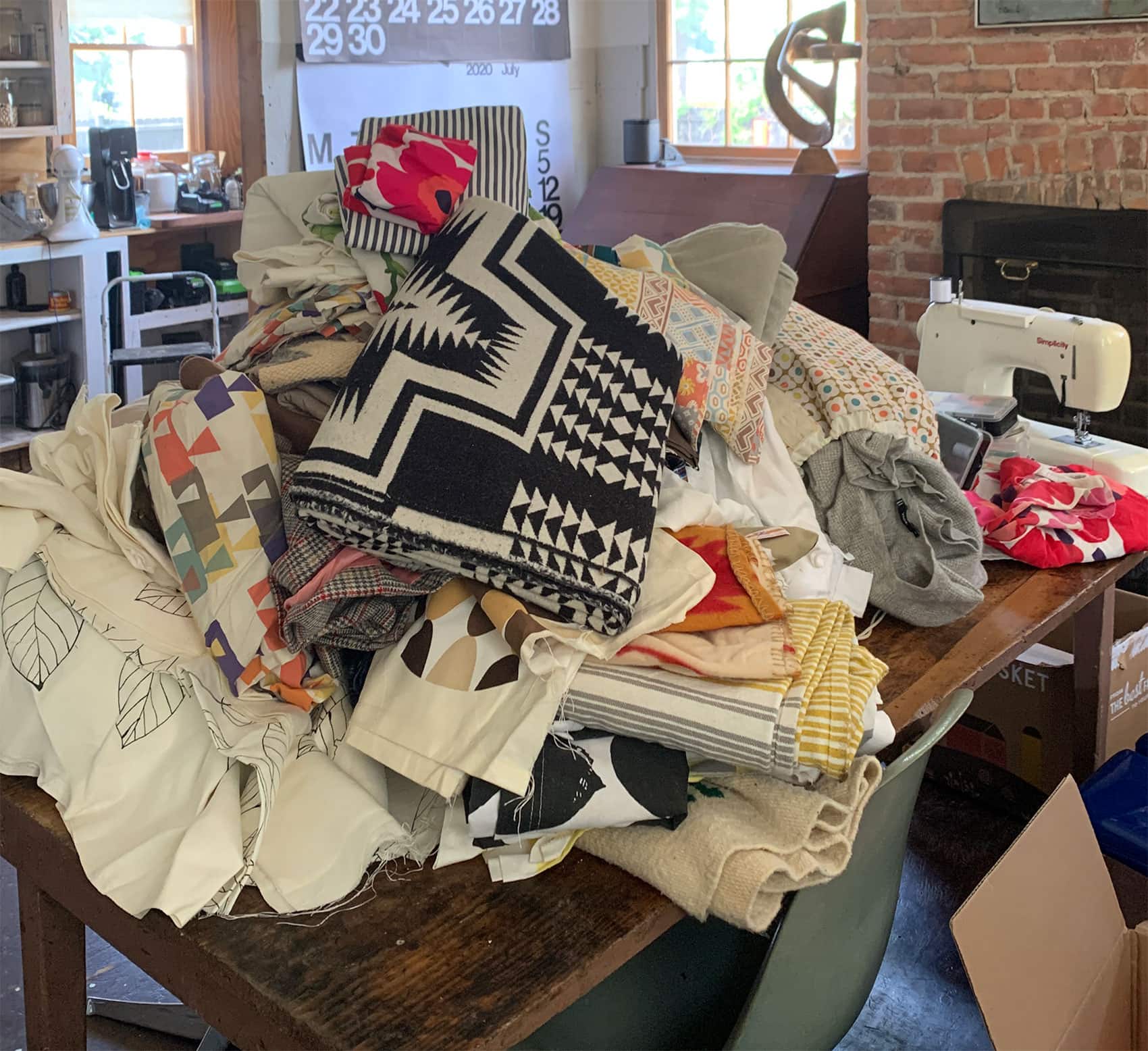
+ KOMONO +
So the first three categories are pretty easy and self-explanatory, and then you get to Komono and don’t know where to start. I think sub-categorizing is essential here. These categories will vary between people depending on what you have, but I spent a lot of time coming up with categories that made sense with my things, and ordered them easiest to hardest, like the broader categories. So here’s my list. If I had any idea how, I’d give you a printable PDF but then—as a piece of paperwork—you’d just throw it away.
- Dog toys and supplies
- Cards: credit cards, debit cards, customer loyalty cards, business cards you’ve been handed, that kind of thing
- Food and pantry items
- Cleaning products and supplies
- Toiletries, skincare, cosmetics, etc.
- Arts & crafts supplies
- Electronics, cables, and chargers
- Stationary/notepads
- Office supplies, pens, pencils, and scissors
- Baskets
- Tea towels and rags
- Table linens, napkins, and aprons
- Fabrics and sewing supplies
- Cameras and photography equipment
- Bed linens, blankets, throw pillows (inserts and covers), towels, shower curtains, and bathmats
- Bags and totes
- Cooking appliances
- Cookware like pots, pans, bakeware, and kitchen tools and utensils
- Servingware, dishes, and trays
- Candles and candlesticks
- Vases and pottery
- Art
- Rugs
- Mirrors
- Lamps and light fixtures
- Furniture
- Gardening tools and supplies
- Lumber
- Tools
- Assorted architectural salvage
- Keys
Again, this list is pretty specific to me. You might have videogames, DVDs and tapes, sports trophies, an extensive collection of sex toys—I don’t know your business! But I think it’s worthwhile to spend some time creating a list of your subcategories before you begin any of the categories. That way, you know you have a plan and won’t get bogged down trying to figure out what comes next.
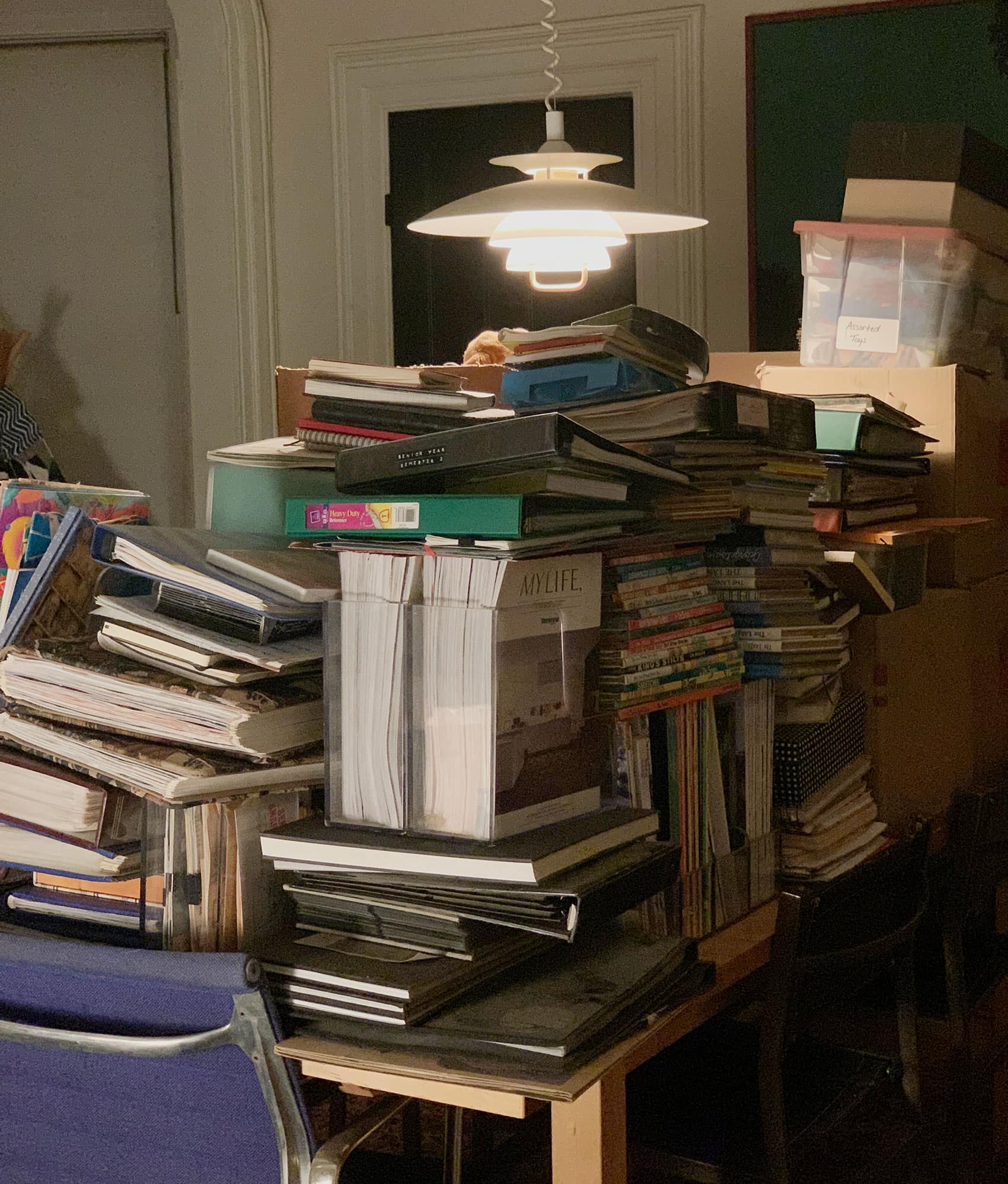
+ KEEPSAKES +
This, too, I divided into a few subcategories:
- Journals, notebooks, sketches and drawings
- School binders and papers
- Childhood artwork
- Photo albums and photos
- Childhood toys
- Objects, trinkets, figurines, souvenirs, and knick-knacks.
As Marie warned, this was the hardest category—but actually not for the reason I expected. I’m not really sure how to write about this without turning it into a whole blog post, but part of the reason I’ve spent the last decade working on houses—my own and others—is that I really do believe that the place you live has a huge effect on your overall well-being and happiness. And confronting this mountain of “keepsakes” was rough—with it came this immediate realization that I’ve really used the physical space of my home to hang onto SO MUCH from the past, like some kind of weird monument to my personal history. For what? What space am I reserving for new experiences, new stories, new people? Because this enormous pile? This is not the pile of a person who has left space in his life for, say, another person to join him in this space. Which is something I’d really like, while we’re all being honest. Going this (life, renovation, what have you) alone was never the intention, and yet my stuff indicates a different story. It made me profoundly sad to just take it all in, in all honesty. Then I got to work, and actually letting go of a ton of it was the easy part.
+ DIGITAL +
Oh yesssssss he didddddddd. I’m adding a category. I’m fucking crazy.
How many back-up hard drives and little keychain flash drives and disorganized files and shit on your desktop do you have? Applications (are they all called Apps now?) that haven’t run since four operating systems ago? Duplicate photo files? So I think it’s worth pulling all that stuff together and spending some time on it. I’m not good about keeping my own computer organized (always too many windows open, always just putting stuff on the desktop to handle later), and I know the mayhem of my digital space causes me a weird level of anxiety and frustration, so I’m going to get after it!
Going to. I haven’t completely wrapped up this whole KonMari event, but I’m super close! Sorting through physical photos feels like a big slow job (I want everything either in albums or the trash), so for now I’ve just set photos and photo albums aside for further review. I’ve also been working on the basement and the garage, where all the lumber and tools live. That’s kind of a big task but nothing I can’t manage, and any organizational improvements to those spaces is a huge victory in my eyes. They tend to get pretty nutty pretty quickly.
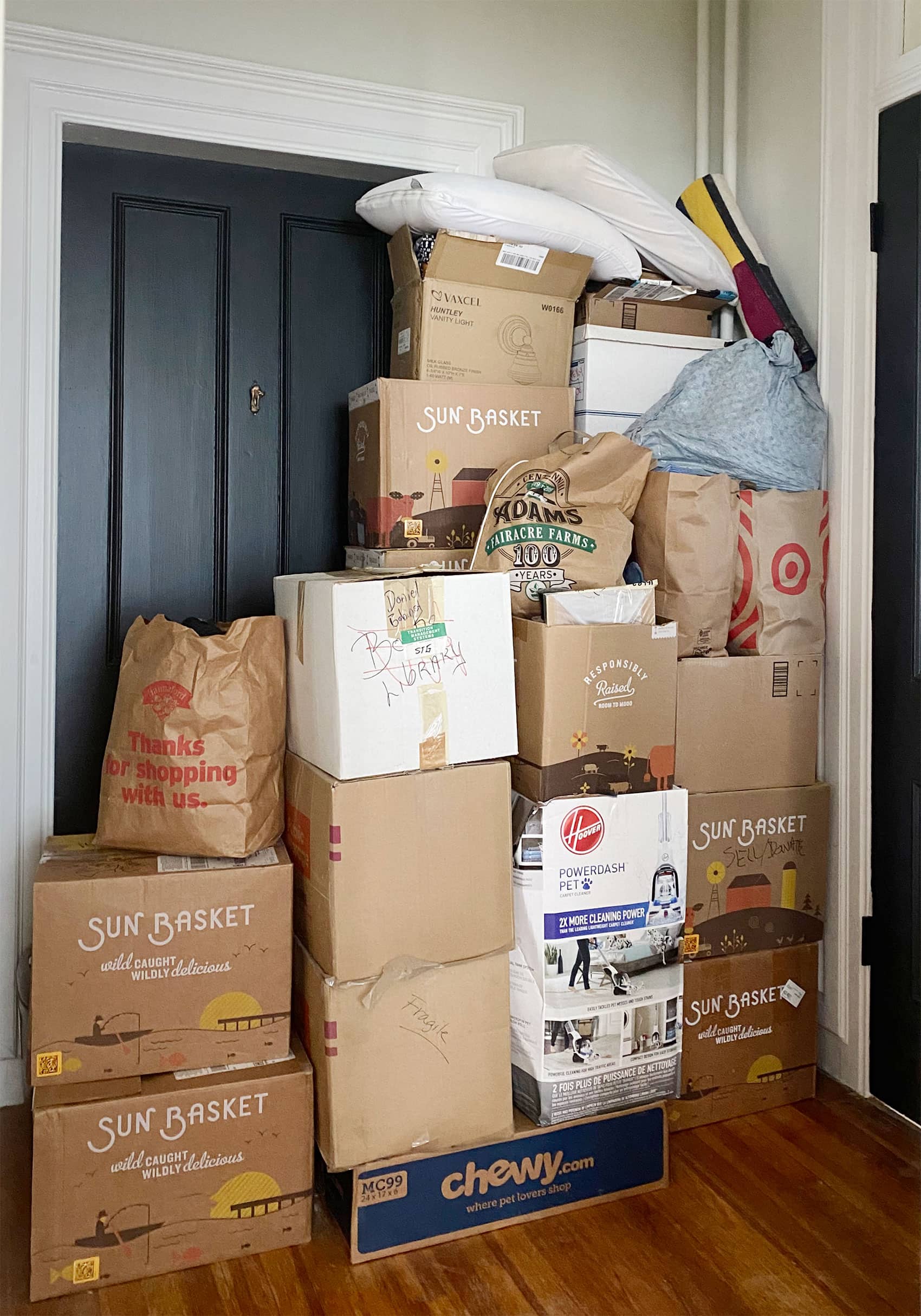
+ WHERE DOES IT ALL GO? +
Above is my pile of STUFF to get rid of. I could list a few things these many boxes contain, but I really do mean a few. Madness! What’s not shown is some of the furniture I plan to part with, and some large semi-broken tools I’ll list on Buy Nothing to become someone else’s problem. But anyway—what now?
The biggest thing that bothers me about Tidying Up is that, based on the text, Marie Kondo seems to say that basically everything you’re getting rid of goes in the trash—like the actual trash; the trash that gets sent to a landfill. I’m guessing this is because seeing the volume of trash bags grow is motivating, and she doesn’t want clients to have the additional burden/distraction of trying to sell things, schlep them to a donation facility, etc. etc. But yeah—I’m not down with that plan, ha!
ANYWAY. Since this stuff isn’t trash, I’d like to attempt some kind of yard sale (feeling increasingly unlikely by the day, in the age of Covid), and maybe sell some of the better stuff online? I dunno. I could use the money so I’d rather try to get a little cash out rather than just donating everything as a one-step solution.
So, a few suggestions for what to do with it all! First, check out my friend Ashley’s excellent post over at The Gold Hive which covers a ton of bases. PLEASE add more in the comments because I’m very much not an expert on waste management, even though I try!
- Recycle papers and plastic. Duh.
- Electronic cables and other electronics (even vacuum cleaners!) can be recycled at Best Buy locations.
- Clothing can of course be donated, or recycled by H&M in exchange for a modest discount on your next purchase.
- Check to see which thrift stores or non-profits in your area are accepting donations.
- Join your local Buy Nothing group on Facebook. Apparently people will take basically anything.
- When in doubt, check out Earth911! You can search by zip code to find out where to recycle pretty much anything.
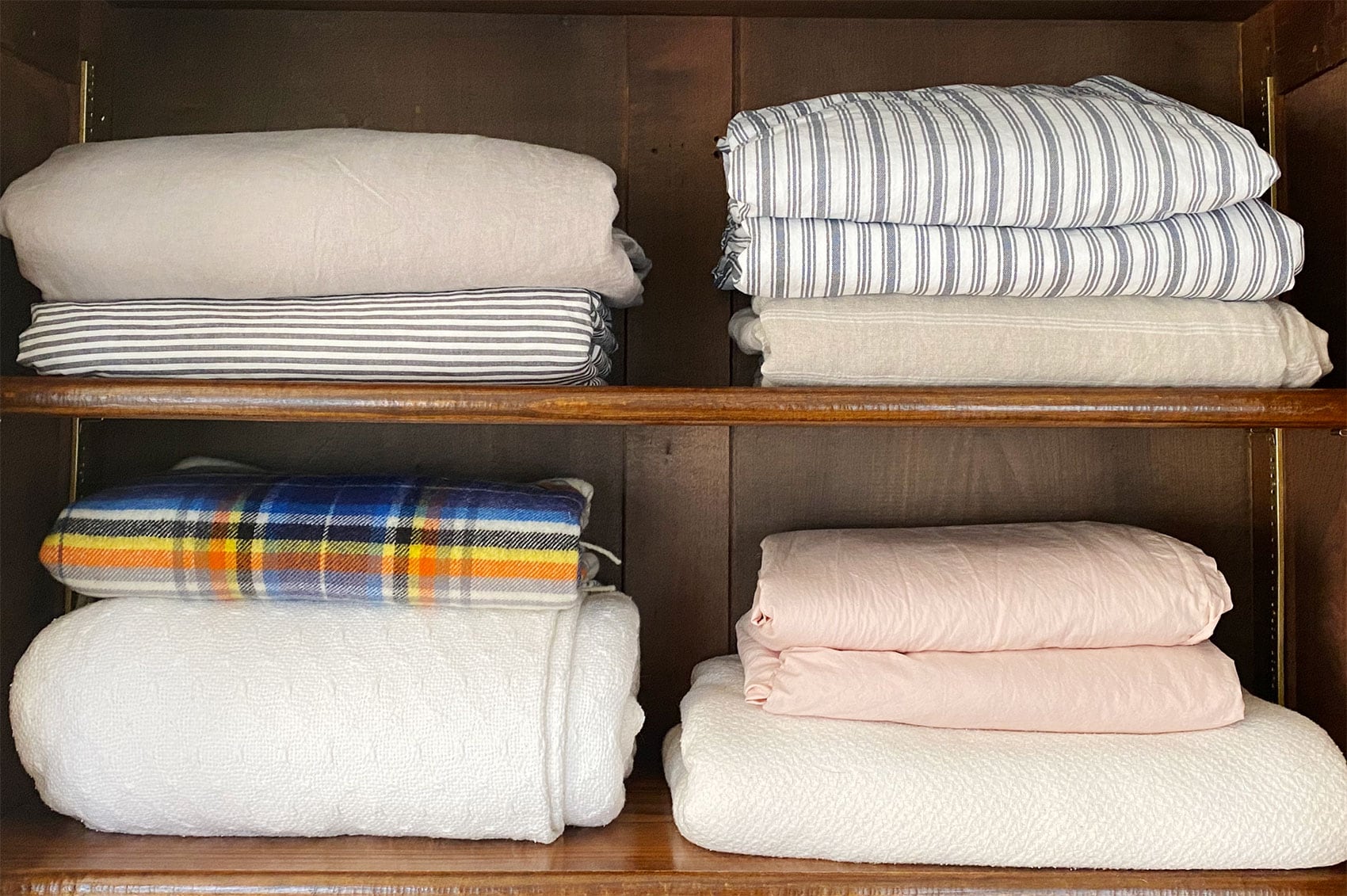
Even though I still have a few parts of this to wrap up, the house feels SO MUCH BETTER. I still have plenty of stuff and am in no way a minimalist, but I don’t really want to be. It’s just so nice to feel in control of my own stuff again, and I feel so much more equipped to do the things I need to do without unnecessary hassle and frustration. On top of that, it’s a really rad thing to look around a room and realize you really love everything you see. I think it might be magic, after all.
Oh, also? I’m feeling a full house tour coming on, since it’s been SEVEN YEARS and it’s looking pretty good up in here! During this pandemic more than ever, I feel so incredibly lucky to live in a place that I love, and will get better as I check more things off the list, and I’m truly grateful to Marie Kondo for showing me the way and teaching me how to tidy. Life-changing, indeed!
Oh, and I still have my yearbooks.
The post The Big 2020 KonMari House-Reset Event! appeared first on Daniel Kanter. If you are seeing this post anywhere else, it is without my permission.
